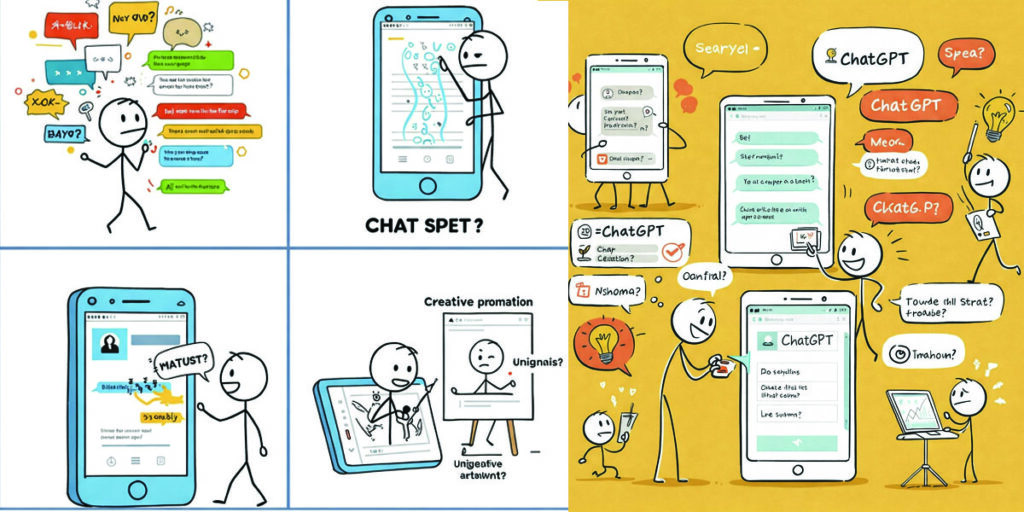Perplexity AI: Revolutionizing Information Access Through Conversational AI Search
In an era defined by an overwhelming deluge of information, the ability to swiftly and accurately locate answers to our queries has become paramount. Traditional search engines, while powerful, often require users to sift through numerous links, synthesize information from disparate sources, and critically evaluate the credibility of each result. Enter Perplexity AI, an artificial intelligence-powered search assistant that promises to transform this landscape by providing direct, conversational answers accompanied by clear citations. This article delves into the history of information retrieval and the evolution of search engines, explores the economic market for AI-powered information services, and examines the networking aspects that underpin Perplexity AI’s functionality and impact.
The Historical Quest for Information Retrieval:
Humanity’s pursuit of knowledge has a long and rich history, predating the digital age by millennia. Ancient civilizations meticulously documented information on clay tablets, papyrus scrolls, and eventually, within the bound pages of books. The challenge, then as now, was not merely the accumulation of knowledge but also its efficient retrieval. Early forms of information organization, such as library catalogs and indexes, represented significant advancements in making stored information accessible.
The invention of the printing press in the 15th century marked a pivotal moment, dramatically increasing the volume and dissemination of information. This necessitated more sophisticated methods of organization and retrieval. Over the subsequent centuries, libraries evolved, classification systems like the Dewey Decimal System emerged, and the principles of cataloging became increasingly refined.
The 20th century witnessed an explosion of information with the advent of new media like radio, television, and eventually, computers. The rise of the internet in the late 20th and early 21st centuries ushered in an unprecedented era of information availability. Search engines like AltaVista, Yahoo!, and ultimately Google, became the primary gateways to this vast digital ocean. These early search engines primarily operated by indexing web pages based on keywords and ranking them according to various algorithms, most notably Google’s PageRank.
However, traditional search engines, while incredibly useful, often present a list of links that users must individually explore to find their answers. This process can be time-consuming and require significant cognitive effort, particularly for complex or nuanced queries. Furthermore, the ranking algorithms, while aiming for relevance, can sometimes be gamed or prioritize commercially driven content over objective information. The need for a more direct, efficient, and reliable way to access information paved the way for the emergence of AI-powered search assistants like Perplexity AI.
The Dawn of AI-Powered Search:
The convergence of advancements in natural language processing (NLP), machine learning (ML), and large language models (LLMs) has made conversational AI search a reality. These technologies enable computers to understand and process human language with increasing sophistication, allowing for more natural and intuitive interactions.
Large Language Models, trained on massive datasets of text and code, possess the ability to generate human-like text, translate languages, write different kinds of creative content, and answer your questions in an informative way. This 1 capability forms the core of AI search assistants like Perplexity AI. Instead of simply providing a list of links, these systems analyze the user’s query, leverage their knowledge base to synthesize relevant information, and present a direct answer in a conversational format. Crucially, they also provide citations to the original sources, enhancing transparency and allowing users to verify the information.
Perplexity AI stands out in this evolving landscape due to its focus on providing comprehensive and cited answers. It aims to go beyond simply retrieving information and instead seeks to understand the user’s intent and provide a concise, well-supported response. This approach addresses some of the key limitations of traditional search engines, such as the need for users to manually evaluate multiple sources and the potential for misinformation.
The Economic Market for AI-Powered Information Services:
The market for AI-powered information services is experiencing significant growth, driven by the increasing demand for efficient and reliable access to information across various sectors. This market encompasses a range of applications, including AI-powered search assistants, chatbots for customer service, intelligent knowledge management systems, and AI tools for research and analysis.
Several factors are fueling this economic expansion:
- Information Overload: The sheer volume of data available online makes it increasingly challenging for individuals and organizations to find the specific information they need quickly. AI-powered tools that can filter, synthesize, and present information efficiently offer a significant value proposition.
- Increasing Complexity of Information Needs: Many queries require nuanced understanding and the integration of information from multiple sources. AI’s ability to process complex language and connect disparate pieces of information makes it well-suited to address these needs.
- Demand for Productivity and Efficiency: In both personal and professional contexts, time is a valuable commodity. AI-powered search assistants can significantly reduce the time and effort required to find answers, boosting productivity and efficiency.
- Advancements in AI and NLP: The rapid progress in AI and NLP technologies has made sophisticated conversational interfaces and accurate information retrieval a practical reality. The development of powerful LLMs has been a key enabler in this regard.
- Integration into Existing Workflows: AI-powered information services are increasingly being integrated into existing applications and workflows, enhancing their functionality and providing users with seamless access to information. Examples include AI-powered features in productivity suites, customer relationship management (CRM) systems, and research platforms.
The competitive landscape of the AI-powered information services market includes established tech giants, specialized AI companies, and startups. Perplexity AI, as a focused AI search assistant, is carving out a niche by emphasizing accuracy, transparency through citations, and a conversational user experience. Its business model likely involves a freemium approach, offering a basic version for free and premium features or enterprise solutions for a fee.
The economic potential of this market is substantial. As AI continues to evolve and become more integrated into our lives, the demand for intelligent information access will only grow. Companies that can provide reliable, efficient, and user-friendly AI-powered information services are poised for significant success.
Networking: The Foundation of Perplexity AI’s Functionality and Impact:
The concept of “networking” is crucial to understanding Perplexity AI from several perspectives: the technical infrastructure that enables its operation, the way it interacts with and leverages information sources, and its potential for fostering knowledge sharing and collaboration among users.
1. Technical Networking Infrastructure:
At its core, Perplexity AI relies on a robust and sophisticated technical infrastructure. This includes:
- Internet Connectivity: Access to the vast resources of the internet is fundamental for Perplexity AI to crawl, index, and retrieve information from countless websites, databases, and other online sources. High-speed and reliable internet connectivity is essential for its real-time information retrieval capabilities.
- Cloud Computing Platforms: The computational demands of training and running large language models, as well as processing user queries in real-time, necessitate the use of powerful cloud computing platforms. These platforms provide the scalable infrastructure needed for storage, processing power, and network bandwidth.
- APIs and Integrations: Perplexity AI likely utilizes various Application Programming Interfaces (APIs) to interact with different data sources and services. This could include APIs for accessing specific databases, news feeds, academic repositories, and potentially even other AI models or tools.
- Data Pipelines: Efficient data pipelines are crucial for collecting, cleaning, processing, and indexing the massive amounts of data that Perplexity AI relies on. These pipelines ensure that the information used by the AI model is up-to-date and relevant.
2. Networking with Information Sources:
Perplexity AI’s ability to provide cited answers hinges on its sophisticated “networking” with a wide range of information sources. This involves:
- Web Crawling and Indexing: Similar to traditional search engines, Perplexity AI likely employs web crawlers to discover and index content across the internet. However, its indexing process is likely more focused on understanding the semantic meaning and context of the information rather than just keywords.
- Natural Language Understanding (NLU): Advanced NLU capabilities allow Perplexity AI to understand the nuances of user queries, identify key entities and concepts, and formulate effective search strategies. This enables it to go beyond simple keyword matching and retrieve more relevant information.
- Information Retrieval (IR) Techniques: Perplexity AI utilizes sophisticated IR techniques to identify the most relevant documents and passages from its indexed data based on the user’s query. This involves ranking algorithms that consider factors like semantic similarity, information quality, and source credibility.
- Knowledge Graph Integration: Perplexity AI may also leverage knowledge graphs, which are structured representations of information that capture relationships between entities. This can help it connect disparate pieces of information and provide more comprehensive and insightful answers.
- Citation Management: A key differentiator of Perplexity AI is its ability to accurately cite the sources of the information it provides. This requires a robust system for tracking the origin of each piece of information and presenting it clearly to the user.
3. Networking for Knowledge Sharing and Collaboration:
Beyond the technical and informational aspects, “networking” also relates to how Perplexity AI can facilitate knowledge sharing and collaboration among its users:
- Sharing Answers and Sources: The ability to easily share the AI-generated answers along with their cited sources can promote the dissemination of reliable information and facilitate discussions based on evidence.
- Community Features: Perplexity AI could potentially incorporate community features that allow users to share their queries and the resulting answers, fostering a collaborative learning environment. Users could also contribute to refining the AI’s understanding by providing feedback on the quality and relevance of the answers.
- Integration with Collaborative Platforms: Integration with existing collaboration platforms like Slack, Microsoft Teams, or research tools could enable teams to leverage Perplexity AI for collective knowledge discovery and problem-solving.
- Personalized Learning and Knowledge Building: By understanding a user’s past queries and interests, Perplexity AI could potentially build a personalized knowledge network, recommending relevant information and facilitating deeper learning in specific domains.
The Future of AI Search and Perplexity AI’s Role:
The field of AI-powered search is rapidly evolving, with ongoing research and development focused on enhancing accuracy, efficiency, and user experience. Future trends may include:
- More Sophisticated Natural Language Understanding: AI models will become even better at understanding complex and nuanced queries, including implicit questions and multi-turn conversations.
- Improved Information Synthesis and Summarization: AI will be able to synthesize information from multiple sources more effectively and generate concise and informative summaries.
- Enhanced Fact-Checking and Source Credibility Assessment: AI models will incorporate more robust mechanisms for verifying the accuracy of information and assessing the credibility of sources.
- Personalized Search Experiences: AI will tailor search results and answers based on individual user preferences, context, and past interactions.
- Multimodal Search: The ability to search using various input formats, such as images, audio, and video, will become more prevalent.
- Integration with Augmented Reality (AR) and Virtual Reality (VR): AI search could be integrated into AR/VR environments to provide contextual information within immersive experiences.
Perplexity AI is well-positioned to be a significant player in this future landscape. Its focus on providing direct, cited answers addresses a key need for reliable and transparent information access. By continuously improving its AI models, expanding its knowledge base, and enhancing its user experience, Perplexity AI has the potential to revolutionize how we interact with information and learn from the vast resources of the digital world. Its commitment to transparency through citations fosters trust and empowers users to engage with information in a more informed and critical manner. As the demand for efficient and reliable information access continues to grow, Perplexity AI’s innovative approach to search offers a compelling vision for the future of knowledge discovery.




















